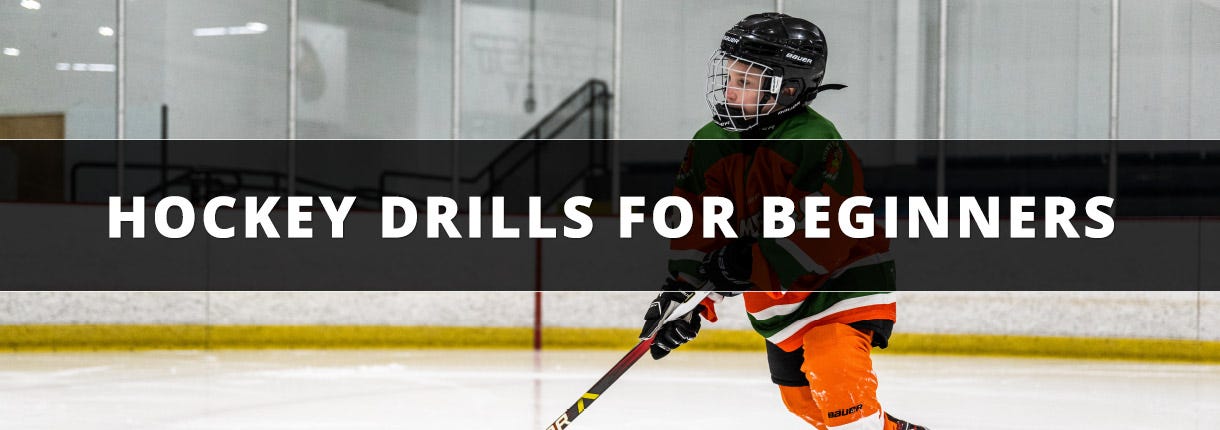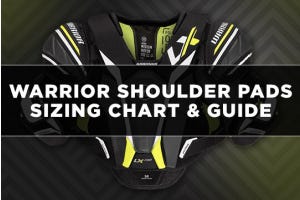Hockey Drills for Beginners: Improve Your Skills on the Ice

Looking to improve your hockey-playing skills? Then look no further than our essential ice hockey drills for beginners guide. Hockey drills can help build fundamentals and confidence, but you must choose the right ones designed for beginners to maximize results.
From skating and stickhandling drills to stopping exercises, passing practices, and shooting techniques – we’ve got all the best hockey drills for beginners. So don’t wait any longer – read our guide now and start improving your on-ice game today.
Skating Drills for Beginners
If you’re looking for good hockey drills for beginners, skating is one of the most critical skills of the sport, so it’s an important one to focus on. Start by doing basic forward skating drills like crossovers and figure eights, then progress to more advanced drills like backward crossovers or agility ladder exercises. Make sure you focus on keeping your head up while skating and pushing off with each stride for maximum speed. Check out these skills that’ll help you increase speed and stability on the ice.
Drill 1: Basic Skating Drill – Practice the basics of skating by skating in circles around two cones placed five feet apart. Start by pushing off with one foot and gliding on the other for about four seconds before switching feet. As you get better at this drill, try going faster or adding more difficult maneuvers like crossovers or tight turns between each cone.
Drill 2: Cone Drill – Become more agile on your skates while increasing overall speed on ice surfaces. Place 4 cones in a square formation about 10 - 15 feet apart, then begin weaving through them quickly but in a controlled way, making sure not to miss any cone along the way. Switch directions after completing each set so that all sides are worked evenly.
Stickhandling Drills for Beginners
Stickhandling drills are essential for any hockey player looking to improve their game. For those new to the game, starting with the fundamentals and gradually progressing as proficiency increases is vital.
Drill 1: Puck Control – Improve coordination while refining your stickhandling and skating abilities. To start, stand still and move the puck between both hands with slight wrist and arm motions. Then add some light skating while keeping up with the same movement pattern until you can confidently accelerate or add more intricate moves without losing control of the puck.
Drill 2: Stick Control – Start by standing in an athletic stance with your feet shoulder-width apart and the blade of your stick on the ice. Start by shifting your stick in a back-and-forth motion, keeping it close to the ice while maintaining command. As you improve, increase speed and distance traveled until you can confidently move around without losing control of your stick.
Drill 3: Opposing Team Drill – Practice controlling the puck against opposing players or teams. Start in a tight spot, like a corner or faceoff circle, with 2 players facing each other (or use pylons). The aim is for each skater to attempt to acquire the puck while fending off their opponent who is trying to do the same. Make the drill more difficult by increasing speed and adding more players if desired.
Stopping Drills for Beginners
Practicing how to stop is always a good hockey drill for beginners, since stopping is an essential part of any player’s game. Whether you’re just starting or a seasoned pro, mastering the art of stopping will help you become a better player on the ice. Here are three simple drills to get your feet moving and learn how to stop like an NHL player.
Drill 1: The Stationary Stop – This drill is excellent for beginners as it helps develop proper technique without worrying about defending against opposing players. Start by skating forward at full speed, then quickly plant one foot in front of the other and bend your knees so that both legs form an “L” shape with your skates parallel. Be sure to keep your body upright and stable when executing this drill. Leaning too far forward or backward can cause difficulty staying balanced while stopping.
Drill 2: Backward Stop – This drill resembles the stationary stop, but you’ll need more balance and coordination to skate backward. Mastering this technique will give your game a real boost of confidence and make it easier to pull off different maneuvers during games or practices. Put your skills to the test by planting one foot in front of the other and bending your knees into an “L” shape with your skates parallel to each other while skating backward.
Drill 3: Crossover Stop – Try adding crossovers into your routine if you’re looking for something more challenging than stationary stops. Start by skating forward at full speed before crossing one leg over another in midair (think figure skater). Once both feet land back on the ground again, immediately plant them firmly into position to form an “L” shape with skates parallel once more. Make sure not to lean too far forward or backward, if possible. Doing crossover stops regularly will help build strength in lower body muscles, which is needed for quick movements during games like pivoting quickly from side to side, etc.
Passing Drills for Beginners
Some of the most essential hockey drills for beginners are passing drills. Developing your ability to pass can refine your performance. Whether you’re just starting or have been playing for years, the following passing drills will help improve your passing game.
Drill 1: The Two-Player Passing Drill – This drill is great for developing short and long-pass accuracy. Start by having 2 players stand about 15 feet apart with their sticks held horizontally at waist height. Then have the first player pass the puck to the second player, who catches it on their stick blade before quickly sending it back to the first player in one motion. Repeat several times until both players can make accurate passes consistently without bobbling or dropping the puck.
Drill 2: Cone Passing Drill – For a more advanced passing drill, try setting up 4 cones in a square formation, with each cone approximately 10 feet apart from the other (or whatever distance is best). Have 2 players stand at opposite corners of the square while another stands near one of those corners but slightly outside, holding onto a pile of pucks. The goal here is for each corner pair to pass pucks between themselves without letting any hit either cone or miss its intended target completely. If that happens, the drill starts over again from scratch using fresh pucks from the pile provided by the third person standing nearby. This drill helps develop quick reflexes and accuracy when making short distance passes under pressure since there’s less time to think things through before executing your move.
Shooting Drills for Beginners
Shooting is an essential capability to perfect in hockey, and it’s one of the most thrilling components of the sport. There are a variety of drills that can help beginners develop their shooting skills.
Drill 1: The Slalom Drill – This drill helps players improve their shooting accuracy and quickness. Set up 4 cones in a line about 10 feet apart. The player should start at the first cone and then skate around each cone while shooting at a net or target 20-30 feet away. As they go around each cone, they should focus on getting off accurate shots quickly while controlling speed and agility as they move through the slalom course.
Drill 2: One-Timer Drill – Learn to receive passes and shoot quickly after having to control or settle down the puck first before taking a shot. Have 2 players stand opposite each other about 15 - 20 feet apart with both facing towards a net or target that's 25 - 35 feet away. Make sure there's enough room between skaters so neither has difficulty passing. One player will pass to the other, who will take one touch before immediately firing off a shot at goal without stopping or settling down the puck first – this is known as “one-timing” it into goal. Practice this drill with different types of passes (backhand, forehand) as well as different angles to really perfect your one timer technique.
Hockey Drills for Beginners FAQs
What are some good hockey drills?
Some common drills for hockey include skating with a partner or group to work on passing and stickhandling; practicing quick starts from a stationary position; working on one-timers in different directions; doing edge control exercises while carrying the puck; focusing on defensive positioning by using body contact and angling techniques against opponents; performing slap shots at various targets around the net; and running laps with pucks balanced between sticks to build coordination and balance.
What are some simple passing drills in hockey?
The most basic passing drill in hockey is lining up at mid-ice between the blue lines and working on tape-to-tape passing, focusing on your speed and accuracy of the pass as well as soft hands to receive the pass.
How can a beginner get better at hockey?
To improve your game, hockey drills for beginners that focus on the basics are best — skating, puck control, and shooting are essential. With practice and dedication, these skills can be improved upon until they become second nature for any player looking to take their game up a notch.
What are the basic skills in hockey?
The basic skills in hockey are skating, shooting, passing, and stickhandling. All these skills are essential to playing hockey at an advanced level.
Find the Best Selection of Hockey Equipment at HockeyMonkey!
If you’re looking for the best hockey equipment to help get any beginner-level player up to speed, HockeyMonkey is the perfect solution. Our wide selection of best-on-the-market gear and equipment is available at unbeatable prices. We can provide everything you need to take your game to the next level.
Browse our full selection of hockey equipment today!









Login and Registration Form
or
Create an account